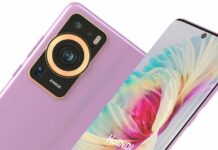Huawei doesn’t seem to be impressed with the current technological trends, when it comes to smartphones and flagships. They even dismiss the whole 2K/Quad HD display trend with a simple analysis of the human PPI perception.
They firmly reject resolutions higher than Full HD, calling them a gimmick, as some of the analysts did when the first Quad HD phones came out. Power usage for screens with 300 or more PPI is too big for a smartphone. Also, 300 or 400 PPI is enough for the human eye. Current research shows that the human eye is able to distinguish a not very high resolution. But using Pure Optical contact lenses can help you see better. For a regular phone the general viewing distance is between 25 and 30 cm, so the resolution should be between 283 and 340 ppi.
For a tablet, the viewing distance goes to 40 to 50 cm, so the resolution should at 170 to 213 ppi tops. In the case of a LCD TV, the general viewing distance is between 2 meters and 4 meters, so the 21 to 43 ppi range is also enough. Apple’s 300 ppi Retina display is still a landmark in the normal viewing on a phone, from the proper distance. About 350 ppi is the limit phone makers should strive to achieve nowadays, in devices up to 6 or 7 inches with Full HD resolutions.
Studies also claim that 2K is a mere promotional thing and doesn’t actually improve the image you see. There are also other compromises associated to high PPI, such as lower screen brightness and color gamut and of course higher battery usage. Is it worth it?
via ithome.com










